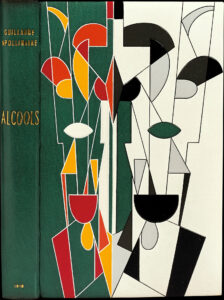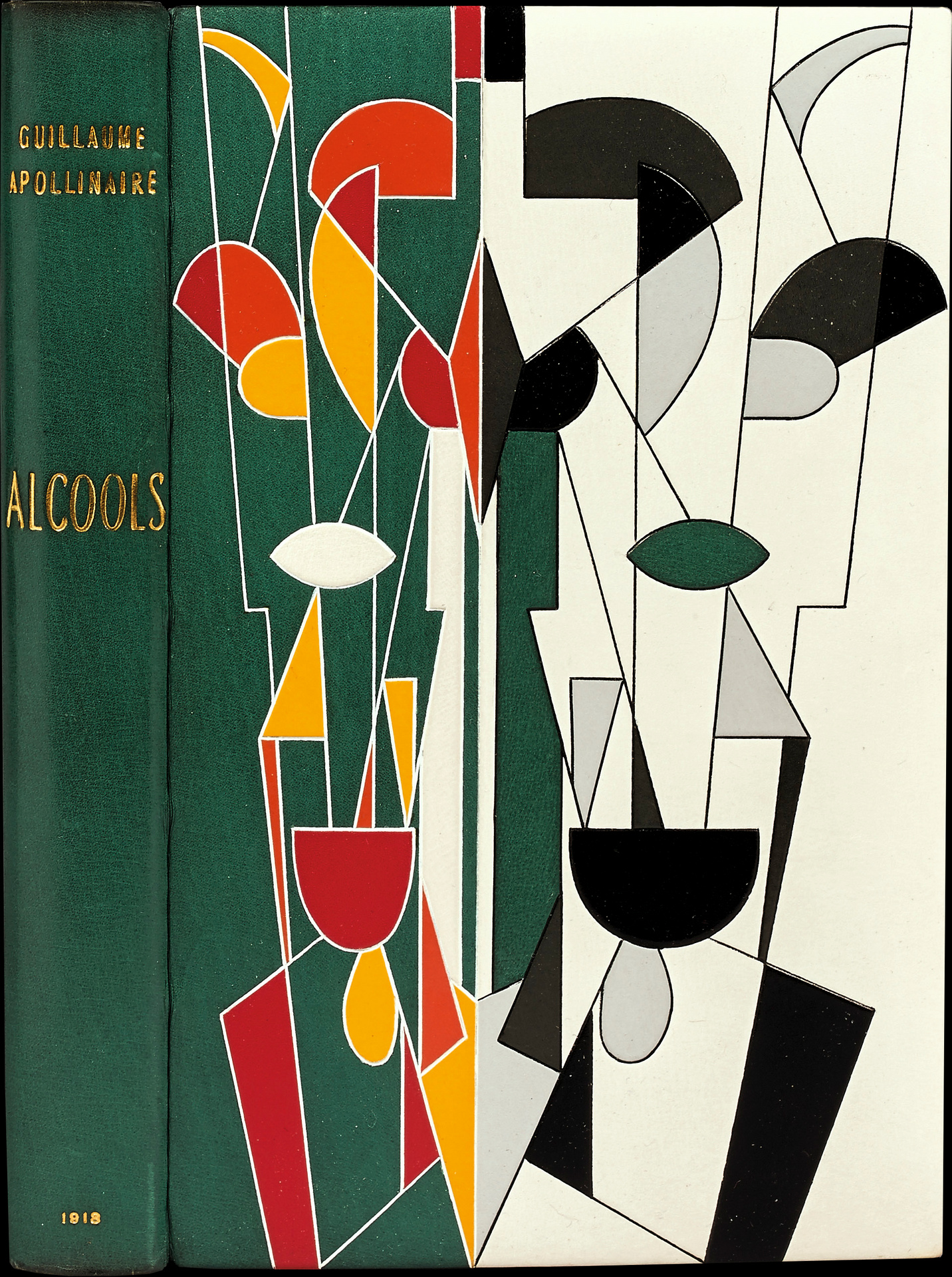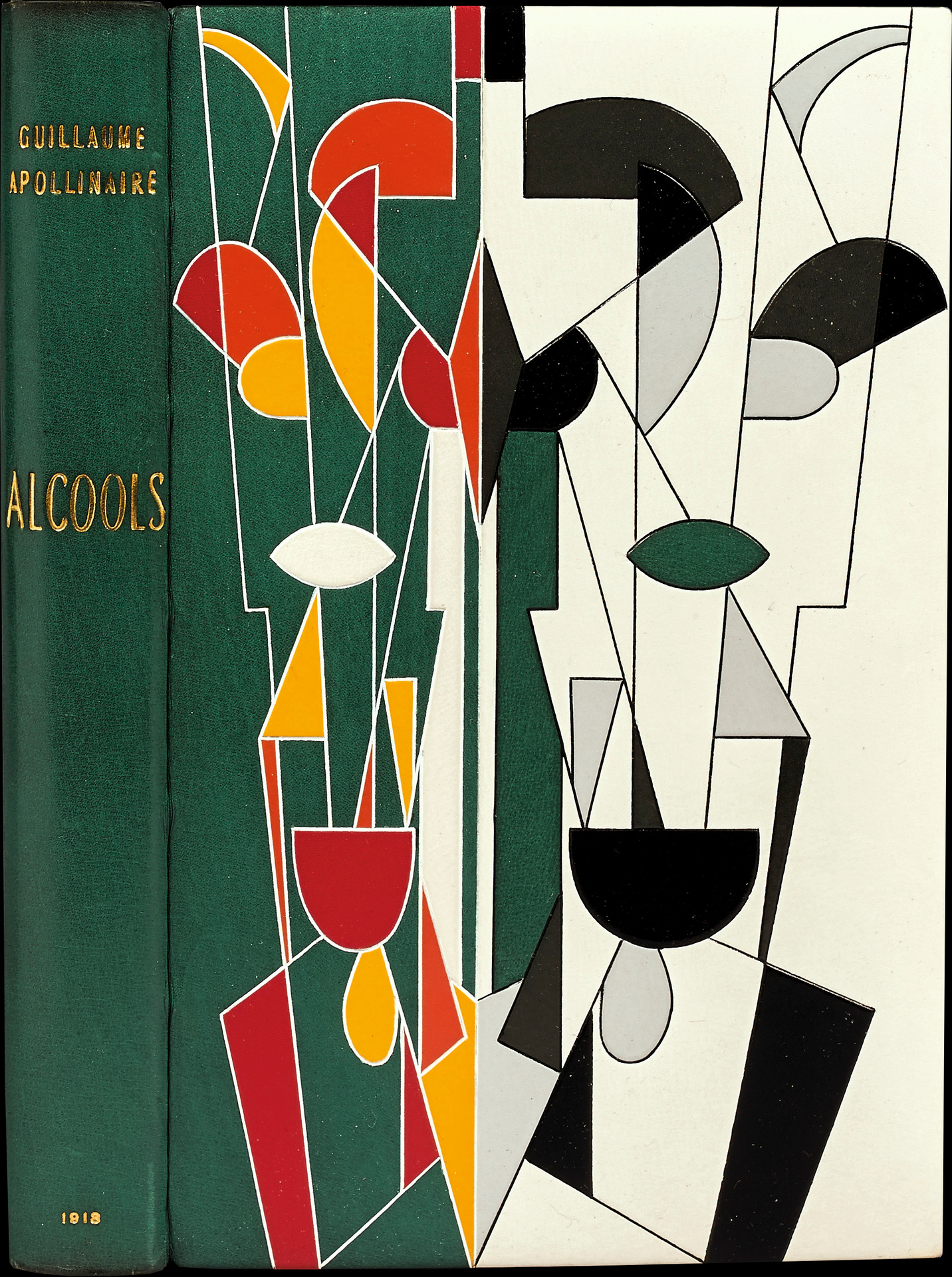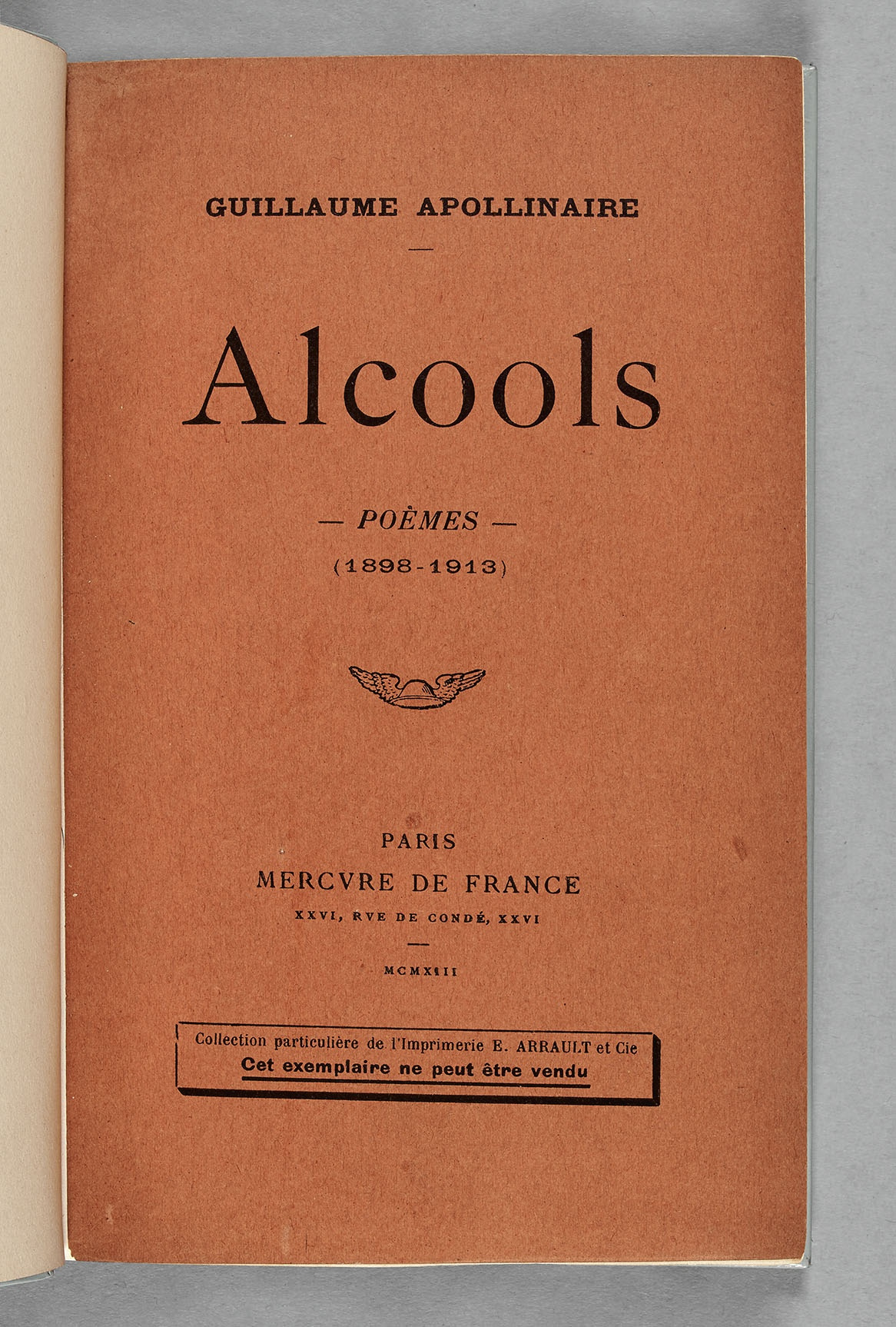Paris, Mercure de France, 1913.
12mo [184 x 115 mm] of 1 bl. l., half-title, title, text from pp. 7 to 200, 2 table ll., imprint, 1 bl. l.
In a rich binding signed Paul Bonet dated 1962, two-part cover, a third in green box-calf, two thirds in white box-calf, separated vertically. An elegant vertical decoration in box-calf hides the separation of the skins: this abstract decoration is patchworked with parts alternating black, grey, red, orange and yellow. On each side of this motif varied geometric shapes are symmetrically patchworked small geometric shapes varied: warm tones (red, orange, yellow and white) on the green background, and cold tones (black, grey and green) on the white background. The two covers are decorated with the same decoration, symmetrically with respect to the axis of the spine; the white box-calf is on the right on the first cover and on the left on the second. The doublures are in white suede, the endpapers in green suede. Gilt edges, special wrappers in brick color bound in. Green striped half-morocco folder and green case.
Original edition of the first collection of Apollinaire’s poems.
The collection is composed of texts mostly scattered in various magazines and which offer the mixed reflection of the poetry of Apollinaire between 1898 and 1912.
During the proofreading, the poet systematically suppressed any punctuation of his texts, which was considered an important innovation and was strongly criticized; “The very rhythm of the cutting of the verses is the true punctuation”. Apollinaire explained in 1913. (Collection littéraire Lagarde et Michard, 20th century, p.41, Histoire de la Littérature Française, Hatier, XXe siècle, p.86).
Published after the break of Apollinaire’s liaison with the painter Marie Laurencin, this work assured the poet’s glory and exerted a considerable influence on the poetry of the first half of the century.
“In Alcools, Apollinaire’s poetry reaches his highest and purest form, so much one feels sincerity, authenticity in the emotion, even in pieces that may seem an artificially funny or pure caprice of fantasy”. (Dictionnaire des Œuvres, I, p. 75).
“The universe of ” Alcools “is a universe of flight, of distance, of disappearance: it is the water that flows, the noises that die, the love that is undone, the beings that pass, the time which separates us from ourselves … Gravity, tenderness, irony, verbal play compose the multiple face of poetry “.
“The universe of” Alcools ” is a universe of flight, of distance, of disappearance: it is the water that flows, the noises that die, the love that is undone, the beings that pass, the time which separates us from ourselves … Gravity, tenderness, irony, verbal play compose the multiple face of poetry “.
This copy is unique as it is preserved in its special original wrappers in brick color, bearing, printed at the bottom of the first cover, underlined and framed in black, the following notice: “Collection particulière de l’imprimerie E. Arrault et Cie. Cet exemplaire ne peut être vendu.”
It was indeed at E. Arrault et Cie, in Tours, that the edition was printed, while the wrapper was not printed by this publishing house, but at Poitiers at G. Roy’s; it is the yellow wrapper that one knows, bearing the mention: “avec un portrait de l’auteur par Pablo Picasso”. This mention does not appear on the wrapper of this copy, nor the portrait, of course, next to the title page.
Arrault’s printing company thus made this wrapper for her own archives’ copy, which stands, today, as an exceptional bibliophilic curiosity.
The sumptuous binding of this unique copy was made by Paul Bonet in 1962. This renowned binder used his favorite technique, patchworking, to which he gave a new vitality by creating a subtle opposition between skins with extremely varied shades and shapes.
Paul Bonet explained in 1933.
“My bookbinding conception:
From the technical point of view: to use all the acquired techniques; constantly search for new constructions in the structure of the work; use all materials; not confine yourself to one process, constantly search and innovate …
From the decorative point of view: as far as possible, the decoration of a binding must be the decorative synthesis of the book; stay between abstract and concrete, make the binding attempt to express the soul of the book … “.
Yves Devaux. L’Univers de la bibliophilie, p. 406.
This binding effectively symbolizes in an abstract way the themes of water and fire, of death and rebirth developed in Alcools. Paul Bonet expresses them here by the opposition of warm tones and cold tones, by a subtle and abstract highly symbolic composition.
Unique copy preserved in its original wrappers specially designed for it in order to become the archives’ copy of the Arrault printing company in 1913.



